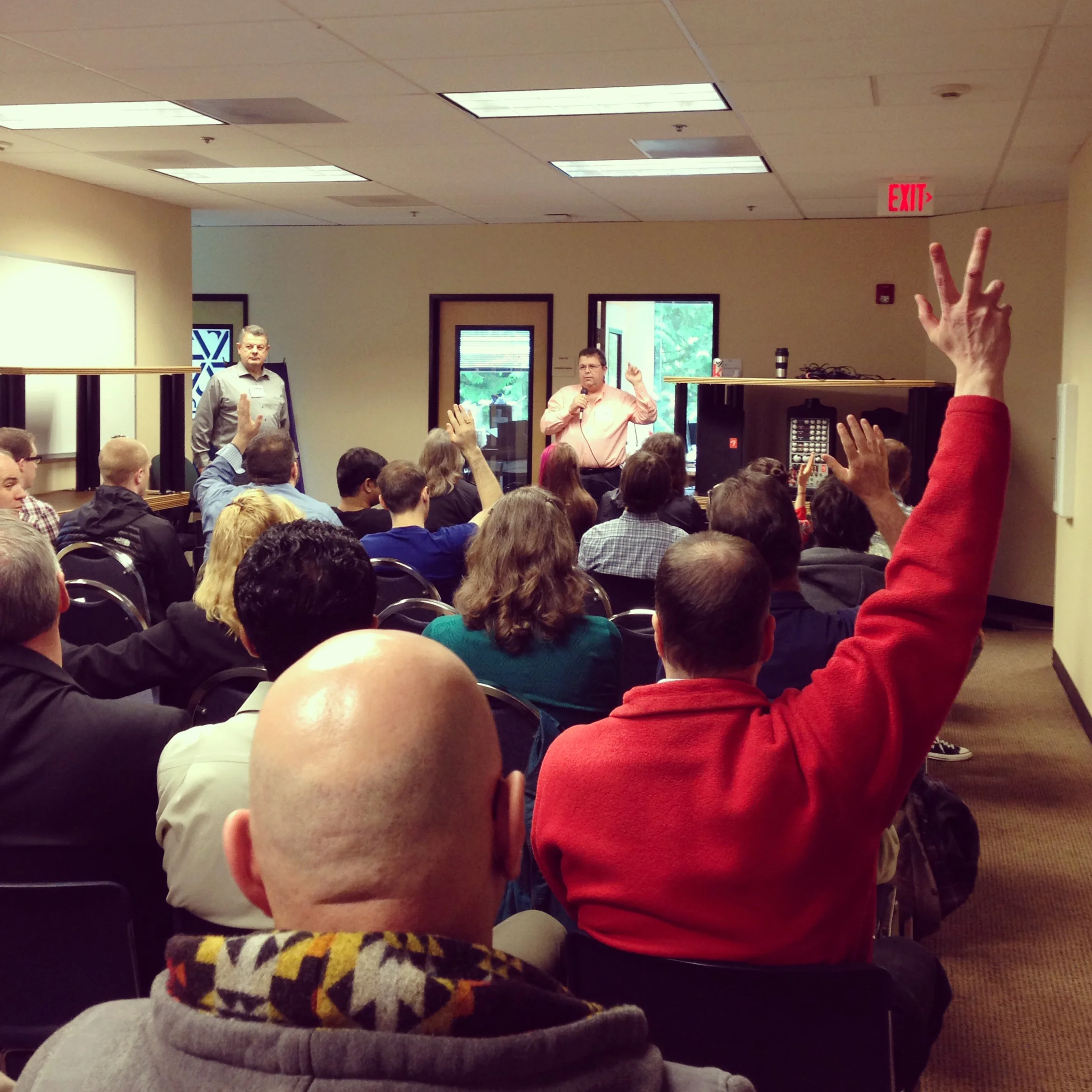When I heard last week that Lunch 2.0 was being hosted conveniently near my workplace in Beaverton, I was compelled to stop by and check it out. Lunch 2.0 doesn't make it out to the west side all that often, so I couldn't resist. If this keeps up I may have to rename this series of posts to “Tech Talks Weekly”!
The Event - Lunch 2.0 hosted by OTBC
The idea behind Lunch 2.0 is great: You visit a local startup or shared workspace, hear about what they’re doing, eat free lunch, and talk with folks in the tech biz. Not a bad way to spend the noon hour, right? The events are coordinated by startup aficionado Rick Turoczy and are located at a different startup each month.
This month’s Lunch 2.0 was hosted by OTBC (Oregon Technology Business Center), one of the original local startup accelerators. What does an accelerator do? Here’s a description from their website:
OTBC provides coaching, networking events, entrepreneurship programs, and shared office space to help tech, biotech, cleantech and opentech start-up ventures succeed
Founders from four of the resident startups (Sonivate, EcoLogistics, MotivatedApps and Metamocracy) gave a quick presentation about their companies. Most of the folks in attendance were angel investors, veteran startup founders, and tech enthusiasts like me.
Who I Met
Two of the people I met were the sole employee of their company: Daren Lewis of LeadingVisually and Richard Clem of MotivatedApps. Darren said he appreciates all the tools available these days that enable him to run his communications consultancy as a single-person operation. Richard explained how much he enjoys working at OTBC, as opposed to a home office, because of the camaraderie of fellow entrepreneurs dealing with similar challenges.
What I Learned
I’m starting to realize that the "Internet of Things" trend is bigger than I thought. Most of the entrepreneurs were buzzing about it, and they are excellent indicators of where the market is going. Here’s my bold prediction: five years from now 25% of the people reading this post will be working on a “connected device” product.
Wrap Up
Do you eat lunch and enjoy talking tech? Perfect! I highly recommend checking out a Lunch 2.0 next time it’s in your neighborhood. It’s a great way to meet some of the smartest folks in the PDX tech scene.
Next Month
I’m still planning on heading to the PDX Selenium User Group later this month. I also noticed that Lunch 2.0 is being hosted at Jive Software on August 14th. If you saw the awesome TechTownPDX video last week, Jive’s office was the one featured in the gratuitous drone-helicopter-flyby shot. To call that awesome is surely an understatement.




















